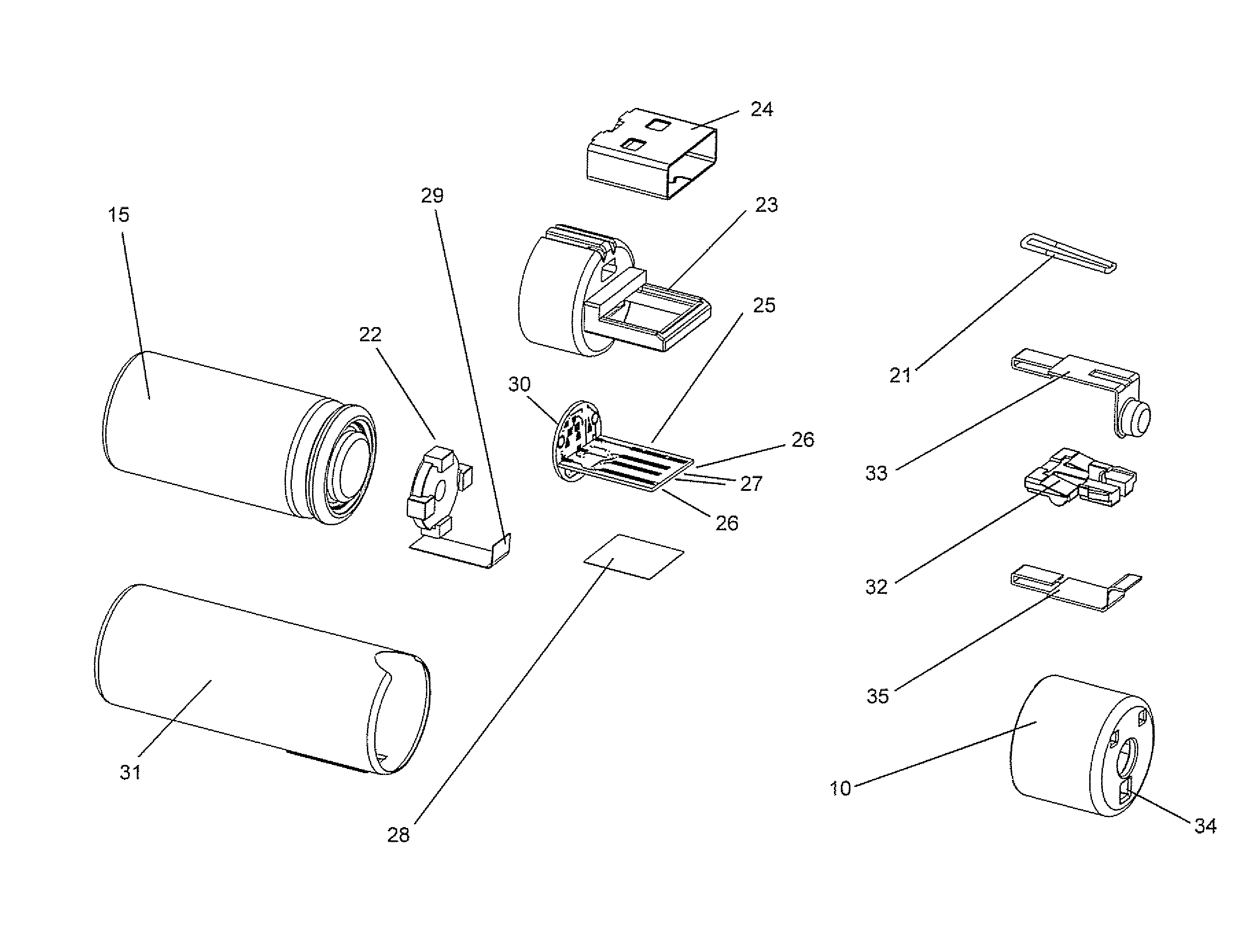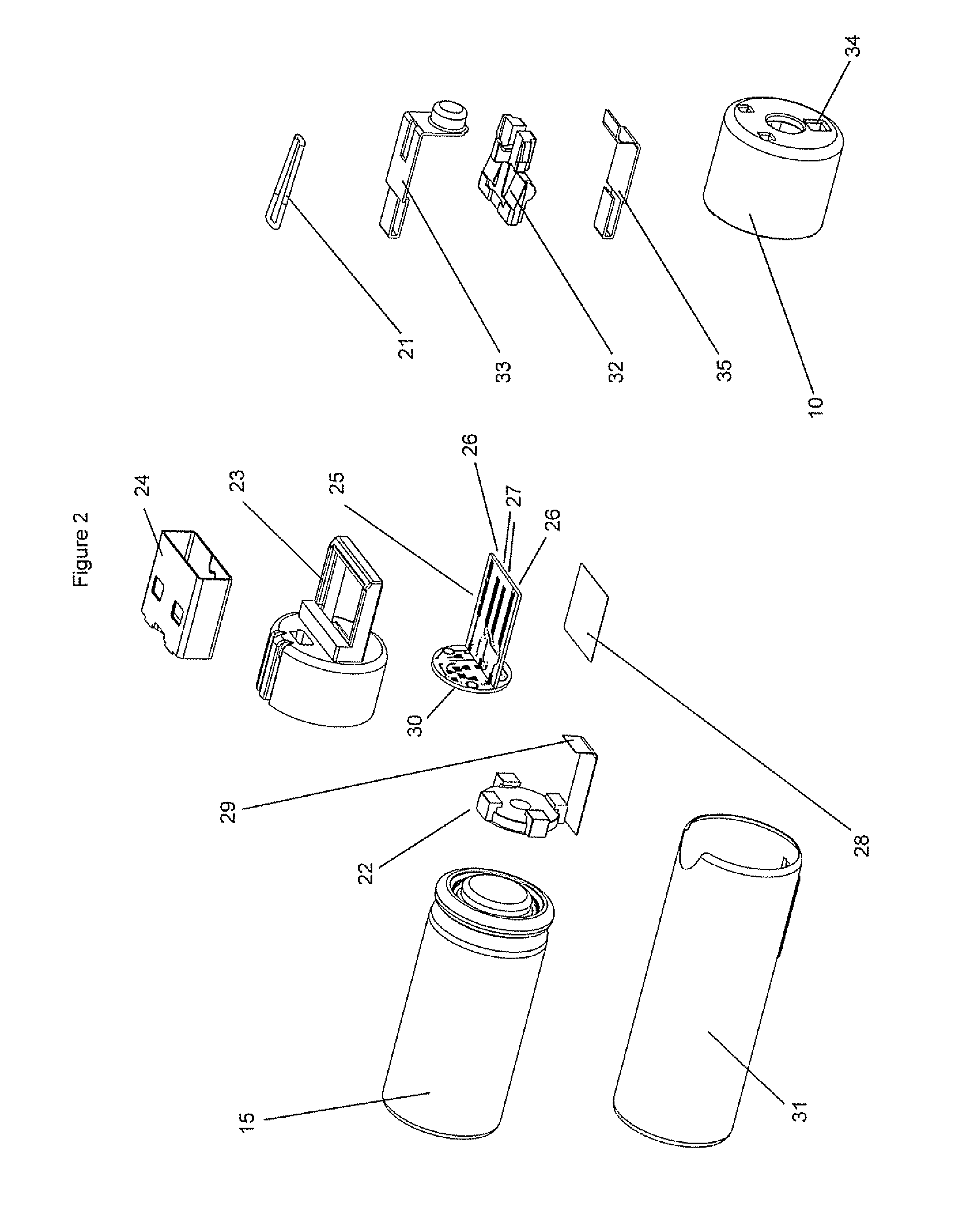Rechargeable battery assembly
a rechargeable battery and battery technology, applied in the direction of cell components, cell component details, safety/protection circuits, etc., can solve the problems of limiting the overall “portability” of rechargeable batteries, inconvenience for consumers, and the inconvenience of carrying dedicated chargers and cables for each of their appliances, so as to reduce self-discharge, prevent excessive current draw, and increase energy density
- Summary
- Abstract
- Description
- Claims
- Application Information
AI Technical Summary
Benefits of technology
Problems solved by technology
Method used
Image
Examples
Embodiment Construction
[0030]FIGS. 1A, 1B, 1C, 1D show three dimensional views of example preferred embodiments of rechargeable battery assemblies according to an embodiment of the invention for various conventional battery formats in a deployed and a charge configuration. FIG. 1A shows an AA format cylindrical cell in a deployed configuration 1 and in a charging configuration 2 and comprising a rear section 9, a removable cap 10, an internal connector 16, and having an external positive terminal 11 and negative terminal 12. The rear section 9 may be a battery unit itself or enclose a rechargeable battery unit 15.
[0031]FIG. 1B shows an AAA format cell in a deployed configuration 3 and in a charging configuration 4, with a rear section 9, movable cap 10 that has a hinge 13 and a folding connector 14, and an external positive terminal 11.
[0032]FIG. 1C shows a 9V PP3 prismatic cell in a deployed configuration 5 and in a charging configuration 6 with a casing 95 that encloses rechargeable battery units 15, ...
PUM
| Property | Measurement | Unit |
|---|---|---|
| voltage | aaaaa | aaaaa |
| voltage | aaaaa | aaaaa |
| charge rate | aaaaa | aaaaa |
Abstract
Description
Claims
Application Information
 Login to View More
Login to View More - R&D
- Intellectual Property
- Life Sciences
- Materials
- Tech Scout
- Unparalleled Data Quality
- Higher Quality Content
- 60% Fewer Hallucinations
Browse by: Latest US Patents, China's latest patents, Technical Efficacy Thesaurus, Application Domain, Technology Topic, Popular Technical Reports.
© 2025 PatSnap. All rights reserved.Legal|Privacy policy|Modern Slavery Act Transparency Statement|Sitemap|About US| Contact US: help@patsnap.com



